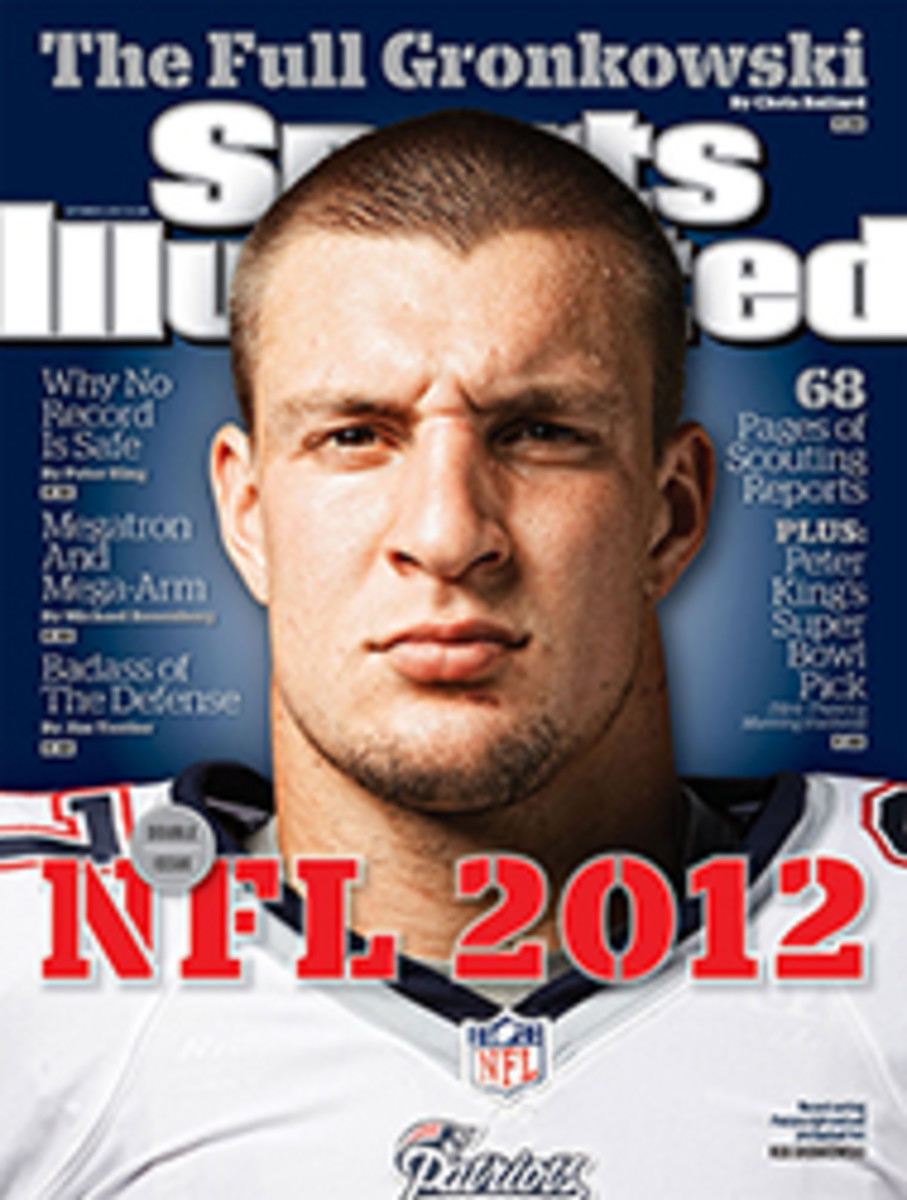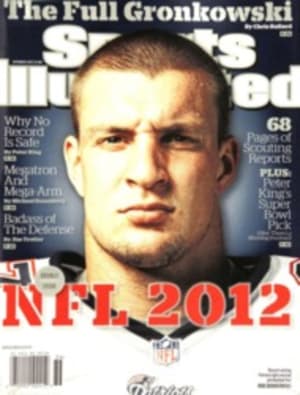
1 SAN FRANCISCO: 49ers
THERE IS a look that's almost indescribable when 49ers offensive coordinator Greg Roman and quarterback Alex Smith reflect on last season's loss to the Giants in the NFC Championship Game. It's somewhere between anger and sadness, resignation and frustration. Losing is one thing. Getting only one catch from your wideouts? For three yards? That defies description. Anger, resignation ... you can see how it's tough to settle on just one.
But that poor performance also explains why Roman's and Smith's eyes dance with anticipation when they discuss an off-season of upgrades at the position. First, Niners brass added a deep threat in Randy Moss, who, if training camp is to be believed, appears rejuvenated following a year out of football. The team also signed Mario Manningham, a precise route runner whose sideline catch for the Giants in the waning minutes of last season's Super Bowl ranks among the alltime greats. And to fill out the receiving corps, San Francisco drafted Illinois's A.J. Jenkins, the Big Ten's receptions leader in 2011, at the bottom of the first round.
In a matter of months, a position of concern has been transformed into one of strength, combining those three with carryovers Michael Crabtree, Ted Ginn Jr. and Kyle Williams.
"Now we have guys with a lot of different strengths," says Smith. "Randy can run and has great ball skills when the ball is in the air. Mario has great quickness. And Crab can do everything—a physical catcher with a huge wingspan. He makes really tough catches look ordinary."
Ordinary. It was a word often used last season when describing the 49ers' passing game. The receivers were never considered a deep group to begin with, and injuries took a toll throughout. In 18 games, including the postseason, Braylon Edwards, Josh Morgan (both gone in free agency), Crabtree and tight ends Delanie Walker and Vernon Davis suited up together just once, in the season opener. For San Francisco to reach the conference final despite only once starting the same two wideouts in three straight games was a testament to Roman's ingenuity.
Consider: The 49ers attempted the second-fewest passes in the league in 2011. Opponents knew they had an excellent chance of shutting down the passing game if they could stop Davis (whose 26 touchdown catches over the past three seasons is one behind tight ends leader Rob Gronkowski). Yet in the games that mattered most, in the playoffs against the Saints and the Giants, Roman schemed Davis to 10 receptions, five of them longer than 25 yards, and four touchdowns.
Imagine what Roman can do now, with Moss taking the top off of defenses and forcing opponents to keep both safeties in coverage. A two-tight-end, two-wideout package is traditionally the tipoff to a run play. But with Davis, Walker, Moss and Crabtree on the field, passing becomes a viable option.
"There's nothing I'd like to do more than drop back and do irresponsible things every play," Roman clarifies, "but it's more fun winning." And now, with a replenished roster of receivers, "that can look a lot of different ways."
The prime beneficiary of these expanded options figures to be Frank Gore. The eighth-year running back often has had to account for one or two extra defenders near the line of scrimmage as defenses sneaked their safeties in for run support. Now, it's not unreasonable to imagine his five-yard gains of a year ago turning into six-, seven- and eight-yard gains this year. "Adding Randy to Vernon and [Ginn], who can go deep, frees up some things," says Gore. "I've never played in the NFL without that extra man in the box."
The 49ers are expected to limit Moss to 20--25 plays a game, depending on the opponent and the packages they use. The goal is to keep him fresh and capitalize on mismatches. If that approach proves successful, combined with outstanding special teams and a defense that returns every starter from a unit that last year ranked No. 1 against the run and No. 2 in points allowed, it should be easy to identify Roman's and Smith's emotions come February.
Projected Lineup
WITH 2011 STATS
OFFENSE 2011 RANK: 26
[originallink:10885791:1009553]
*2010 stats
(N) New acquisition
TTD Total touchdowns
OFFENSIVE LINEMEN
SACKS Sacks allowed
HOLD Holding penalties
FALSE False starts
SCHEDULE
2011 Record: 13--3
SEPTEMBER
9 at Green Bay
16 Detroit
23 at Minnesota
30 at New York Jets
OCTOBER
7 Buffalo
14 New York Giants
18 Seattle (Thu)
29 at Arizona (Mon)
NOVEMBER
4 BYE
11 St. Louis
19 Chicago (Mon)
25 at New Orleans
DECEMBER
2 at St. Louis
9 Miami
16 at New England
23 at Seattle
30 Arizona
SPOTLIGHT
Randy Moss
Wide receiver
There is no overstating his importance to this offense and to this team as a whole. Speed and downfield ability aside, he's been a difference maker in the meeting rooms and in the impromptu two- and three-player huddles that take place on the field, imparting the wisdom gleaned from 13 years in the league.
"I call him Old Man," Smith says playfully of the 35-year-old standout. "He's got a ton of knowledge, not just for the receivers but for me. He sees a lot—coverages, leverage, technique. And he does a great job communicating what he's looking at and asking what I'm seeing. That's how you build a rapport. It allows you to start anticipating things." One man can't do it all, but other receivers are catching on too. "Guys are talking more," says Smith.
As impressed as the 49ers have been, Moss must still prove himself in games. He seemed uninterested while playing for three teams in 2010, with just 28 catches for 393 yards and five scores. But his new teammates have not seen that guy. Says Gore, "A Randy Moss who wants to play football—that's hard to stop. And he's showing us that he wants to play football."
NUMBERS
22
Percentage of goal-to-go downs converted into touchdowns by the 49ers in 2011 (9 of 41). Newcomer Brandon Jacobs scored on 7 of 13 with the Giants last year.
19
Percentage of his plays on which rookie outside linebacker Aldon Smith had a sack, hit or hurry--the highest rate for any defensive player in the league.
69
Combined sacks, hits and hurries by Justin Smith, the most of any 3--4 defensive end in the NFL and the fifth most of any player.
PHOTO
PETER READ MILLER (SMITH)
Smith's new weapons include a likely Hall of Famer and the guy who made the biggest catch of 2011.
PHOTO
BRETT DAVIS/US PRESSWIRE (MOSS)

